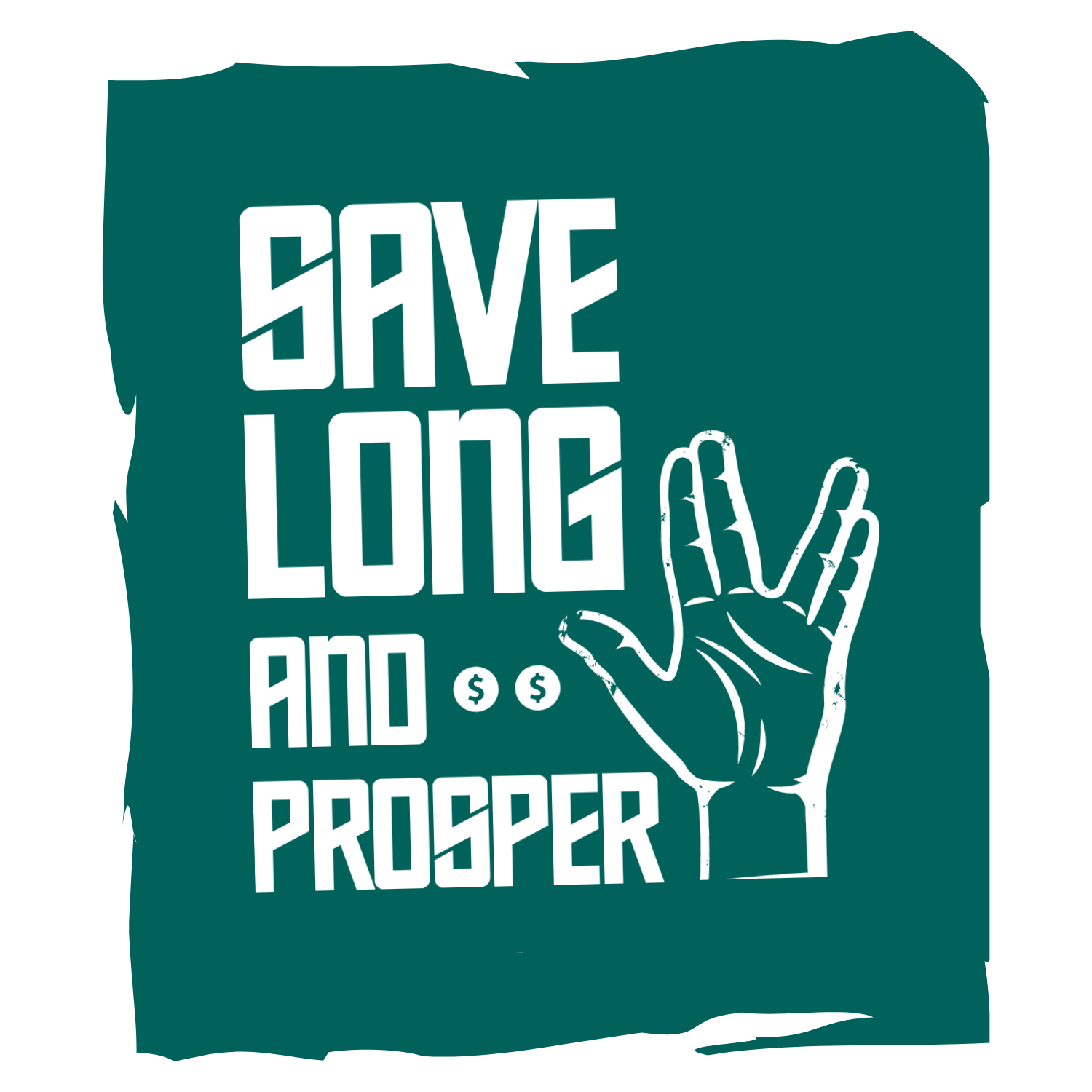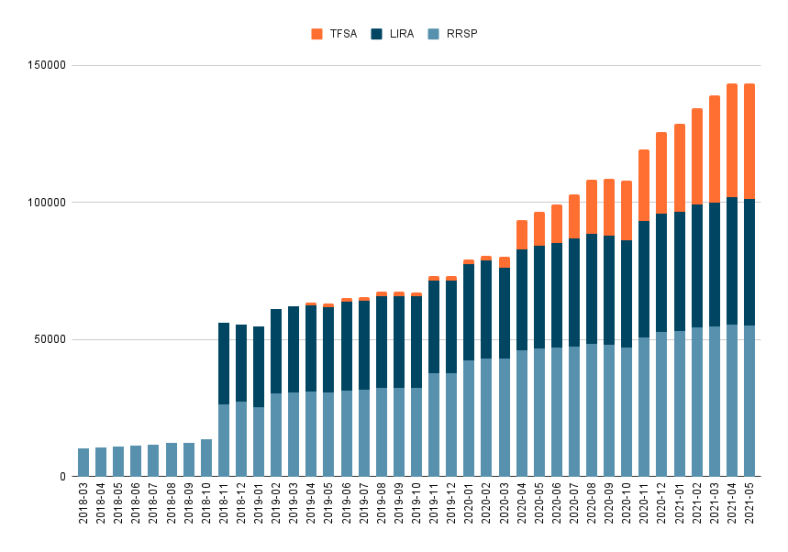Hello!
I hope you had a beautiful (and certainly warm) August! For my part, I sur did. I enjoyed the nice weather and had a great time with friends and family. What more could you ask for? Oh, and I blew out my thirtieth candle, and I’m doing great. After all, I’ve heard that the best is yet to come. 🙂
Also, it was a month full of changes on the financial side. I couldn’t wait to share the details with you! Basically, the changes are due to buying my mother’s house, as I had already mentioned in my last article. Although the purchase is not expected to be finalized until October, the process is underway and it has allowed me to get some things sorted out.
So, let’s see those changes!
Net Worth as of August 31, 2021
| Assets | |
| Checking Accounts: Questrade TFSA: Questrade LIRA: Questrade RRSP: FTQ RRSP: Fondaction RRSP: Non-registered: | $1,759 $68,670 $50,545 $39,650 $0 $0 $4,856 |
| Total assets: | $165,319 |
| Liabilities | |
| Line of credit: Credit cards: | $0 -$1,199 |
| Total liabilities: | -$1,199 |
| Net Worth | $166,518 |
| Difference | +$10,198 |
First of all, I can’t pass up the absolutely mind-blowing returns of the last month. It seems to me that almost every day ended in the green. Considering this, we can’t help wondering when the next correction will be, right? But in the meantime, let’s appreciate the good results and not try to time the market!
The same can be said for crypto which continues its recovery. After spending about 2 months in the red on all my positions, I am starting to see substantial profit again!
Thus, my net worth increased by a whopping $10,198. Wow! A 5-digit increase, now we’re talking. 😉
Assets
Indeed, there are a few changes here and there on the asset front.
Indeed, I no longer have worker funds RRSPs (FTQ and Fondaction). Why is that? Because I used them for the Home Buyers’ Plan (HBP). Since worker funds are very inflexible RRSPs for a FIRE goal, I thought that this was the best use I could make of it.
So, with the withdrawal of these RRSPs (totalling about $21,000), I was able to invest the majority of it in my TFSA. Yes, there is no obligation to use the entire HBP for a house down payment. This brings about a good change in the proportion of my TFSA in my total portfolio. See here the evolution of my different accounts over time:
Just last month, my TFSA represented 30% of my portfolio. Now it’s 40%. I love it!
Now I have about $14,000 left to receive from Questrade to use the HBP to its maximum of $35,000. Of that, I’ll take the minimum required for the down payment and closing costs for the house, and then the rest will also go into my TFSA.
In the end, I should have just under $9,000 left to contribute before my TFSA is maxed out. That shouldn’t take too long! Without the HBP, I had estimated that I would not have maxed it out before 2023! Hooray!
Liabilities
There are also some changes on the liability front. Yes, I gave in to temptation when I received the funds from my RRSPs for the HBP. I ended up paying off my car and my vision correction surgery! Good riddance!
Otherwise, I have a lot of credit on my credit cards due to the recent cancellation of my Hawaii trip. The current surge in Covid cases there forced my hand a bit. However, there are several other destinations where cases are better under control and sanitary measures are less severe. Stay tuned for the new destination!
In the end, my 5-digit net worth increase was actually a bit inflated by all these recent refunds. Still, it looks very nice. 😉
Savings
Here are the details of my August savings:
- August 11: $575 out of $1,836.98 net
- August 25: $1,200 out of $1,836.99 net
- Total savings: $1,775 out of $3,673.97 in August or a 48% savings rate
Of the $1,775I saved, I contributed $1,400 to my TFSA and bought $375 worth of cryptocurrency outside a registered account.
Since I paid off my car entirely on August 17, there is a world of difference on my savings rate between the two pays I received this month. It averages out to 48% for the month, but I can expect to average 65% or more for the next few months!
Also, although I will have a mortgage to pay probably starting in November, but the payments should entirely be absorbed by my October pay raise. 🙂
In short, it’s looking good for the end of the year!
Expense Report
| Date | Amount | Description |
|---|---|---|
| 2021-09-01 | $22.05 | Gas |
| 2021-08-02 | $1.56 | Amazon |
| 2021-08-03 | $5.74 | Pharmacy |
| 2021-08-03 | $100.28 | Groceries |
| 2021-08-03 | $502.50 | Rent |
| 2021-08-05 | $44.90 | Car Insurance |
| 2021-08-05 | $15.69 | Home Insurance |
| 2021-08-05 | $6.19 | Groceries |
| 2021-08-08 | $18.36 | Groceries |
| 2021-08-10 | $39.18 | Gas |
| 2021-08-12 | $58.68 | Pharmacy |
| 2021-08-12 | $25.59 | Groceries |
| 2021-08-13 | $403.85 | Car Payment |
| 2021-08-15 | $19.53 | Mondou |
| 2021-08-16 | $94,15 | Groceries |
| 2021-08-17 | $17.01 | Pharmacy |
| 2021-08-17 | $2,539.08 | Car Payment |
| 2021-08-20 | $148.08 | Helight |
| 2021-08-21 | $30.06 | Gas |
| 2021-08-25 | $7.48 | Hydro Québec |
| 2021-08-28 | $68.99 | Costco Membership |
| 2021-08-29 | $80.03 | Groceries |
| 2021-08-29 | $26.45 | Home Internet |
| Total: | $4,275.43 |
In July, I spent $4,275.43, which is $51,305.10 annualized. If we take out my car loan payments, it comes down to $1,332.50, which is $15,989.94 annualized.
Just like that, it sure looks like a big month, considering my total car loan balance payment. However, without that, it was a pretty frugal month (even for me!). So even though it’s summer and the weather is nice, my activities are still pretty cheap. It costs almost nothing, after all, to enjoy the outdoors by hiking, biking, or visiting or entertaining friends. On the (rare) rainy days, we can always watch Star Trek on Netflix. 😉
Actually, there was originally more spending than that, but the cancellation of my trip changed that. It’s only a postponement in September, really!
Reading List
August was a month of slightly lighter reading. I allowed myself a little fiction and mindset refresh.
Here is my August reading list:
- Un pas à la fois by Sébastien Sasseville
- Star Trek Picard: The Dark Veil by James Swallow
- La retraite à 40 ans by Jean-Sébastien Pilotte
- Surrounded by Idiots by Thomas Erikson
- Murder on the Orient Express by Agatha Christie
I decided to read Un pas à la fois after seeing a lecture by Sebastien Sasseville organized by my employer. I found him truly inspiring and his book did not disappoint. His adventures and exploits make us think about how much we can accomplish ourselves and we can learn a lot of lessons that can be applied to different areas of life. In short, I recommend. 🙂
I also allowed myself a little rereading of La retraite à 40 ans. Although the material has been well assimilated over time, it’s still excellent for staying motivated.
The next reread will probably be Liberté 45!
Conclusion
So that’s it for the month of August. We already have more months done than we have left in 2021. It’s amazing how fast time flies. However, now that I’m on vacation for three weeks, I wouldn’t mind if time slowed down a bit. Pretty please! 😉
In addition to my plan B for travel, I’m going to use my vacation time to practice being free. I’m so used to running one way, then the other, making lists and chasing the clock. It will be important to try to deprogram all of that for the next three weeks. I think I’m going to like it 😉
What about you, how does September look like for you? Back to the daily grind, or like me, you have a late vacation?
Either way, I wish you good weather and a great September, folks!



















